Northern and Central Bangladesh brace for more floodwaters as discharge from the Ganges-Brahmaputra-Meghna (GBM) basin is predicted to increase in the next 7 days (https://flood-ffwc.rimes.int) amid presently above-danger water levels. Three days ago, 14 districts were already flooded for several days, with 7 districts experiencing severe floods with water levels of over 1 meter above the danger level (Figure 1). Early actions based on 15-day flood forecasts, which were issued ahead of the flood season by the Flood Forecasting and Warning Centre (FFWC) of the Bangladesh Water Development Board (BWDB), significantly reduced losses in livelihoods.
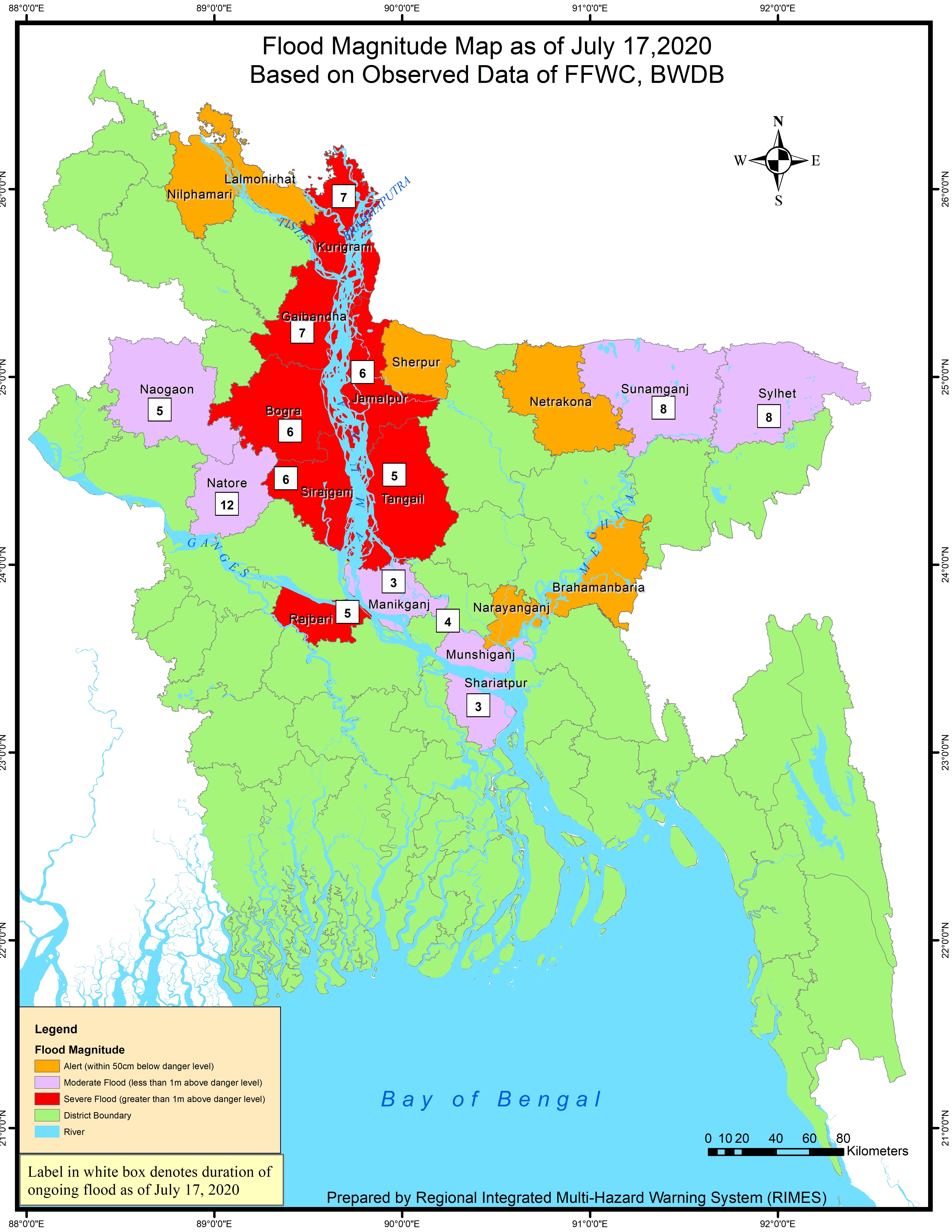
Figure 1 Districts affected by ongoing floods in Bangladesh
The forecasts, having over 80% certainty, are generated through the 15-day probabilistic flood forecasting system that FFWC developed with RIMES technical support. The forecasts guided anticipatory actions by government and non-government organizations and the public. The Ministry of Disaster Management and Relief (MoDMR) convened a virtual meeting of the Inter-Ministerial Disaster Management Coordination Committee (IMDMCC) to prepare for the impending flood. FFWC, in collaboration with the Department of Disaster Management (DDM), Department of Agricultural Extension (DAE) and Department of Livestock Services (DLS), and with technical support from RIMES, prepared flood early warning and advisory messages, which were then broadcasted as voice messages to district, upazila (sub-district), and union (village) level disaster management committees, local administrators, sector focal points, union disaster volunteers, and community members in districts that were at risk (a total of 25,000 recipients). With the timely information, local governments and communities were able to take individual and collective early actions. Early actions are, however, challenging under the heightened risk environment caused by COVID-19. The first wave of flooding began in late June and continued into early July, while the second wave started a week later, when the first wave has not yet receded.
“I have been working in these flood-prone districts since 1989. Despite the progress we made in disaster management, we never received such timely and location-specific early warning before. With such effective information, we have started to believe that a lot can be done before the floods, which earlier seemed impossible.”
- Md. Nayeb Ali, District Risk and Rehabilitation Officer (DRRO), Jamalpur
“I went to shelter after I received the flood forecast and preparedness advisory. I took my goats and chickens to higher ground, as advised in the message. Also, I did not proceed to prepare Aman seedbed, based on the advisory. It saved me from a huge loss. I share this information with my neighbors. They also appreciated this, as the forecasts were correct. I thought I would move back home, but now, after getting another flood advisory, I am staying at the shelter.”
- Shamsu, a villager of Haldia in Saghata Upazila, Gaibandha
In Northern Bangladesh, where CARE Bangladesh, Islamic Relief Bangladesh, and Concern Worldwide are implementing the project titled Supporting Flood Forecast-based Early Action and Learning (SUFAL) with technical support from RIMES, FFWC forecasts were used to trigger preparedness actions. The two-stage trigger mechanism is based on flood probabilities:
- If the forecast indicates more than 60% flood probability, Level 1 early actions are triggered. These include dissemination of flood forecast and advisories, identification of most vulnerable households needing evacuation and support, preparation of evacuation points and flood shelters, and repair of access roads, evacuation routes, and embankments at potential breach points.
- If the forecast indicates a flood of at least 5-day duration with more than 75% probability, Level 2 actions are triggered. These include distribution of tents and water, sanitation and hygiene (WASH) kits, transportation support for evacuation to flood shelters, moving assets and livestock to higher ground, and provision of drinking water, sanitation and personal protective gears (e.g. face masks) at the shelters.
In Kurigram, Gaibandha, and Jamalpur districts, Level 1 actions were triggered on 16 June 2020, while Level 2 actions were initiated on 22 June 2020. Early actions were a combined effort by the local government, SUFAL project, and the communities, coordinated by disaster management committees at district, upazila, and union levels to ensure synergy and optimum use of resources.
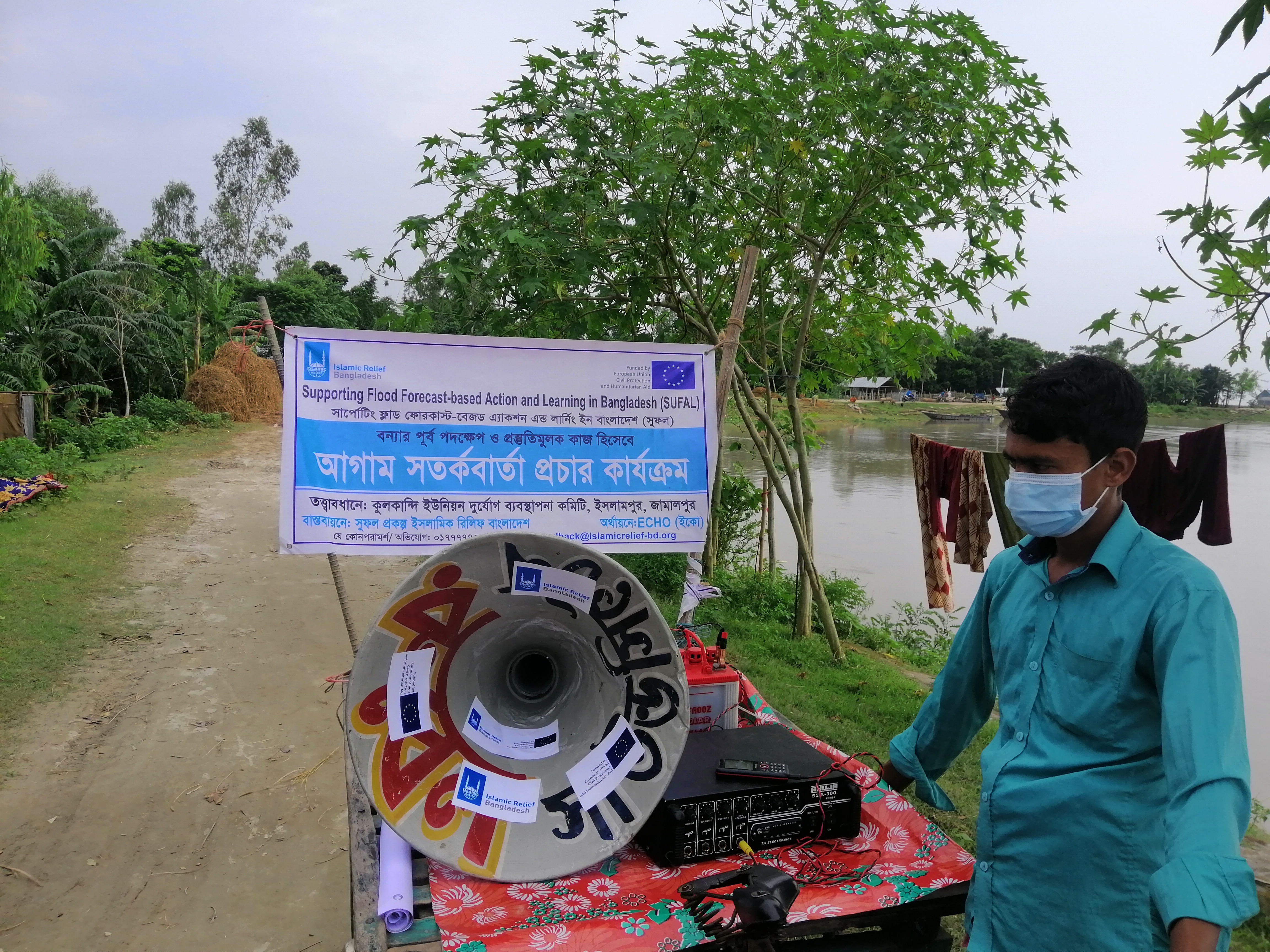
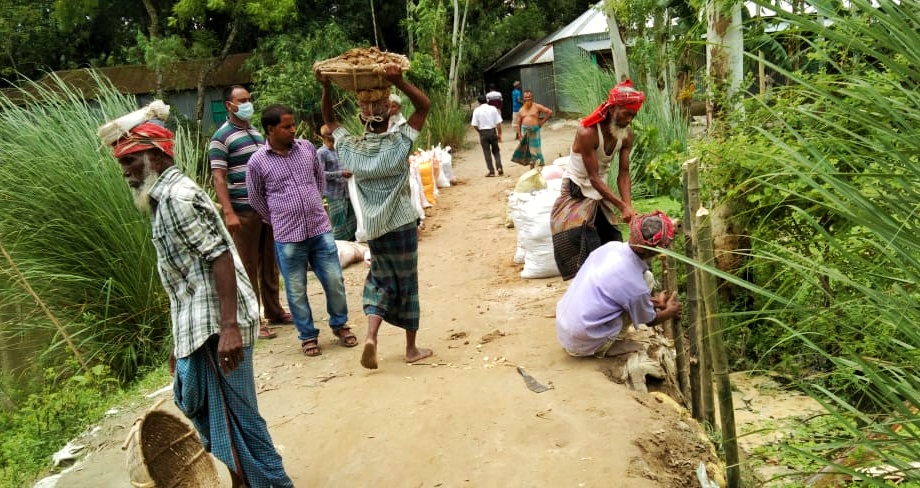
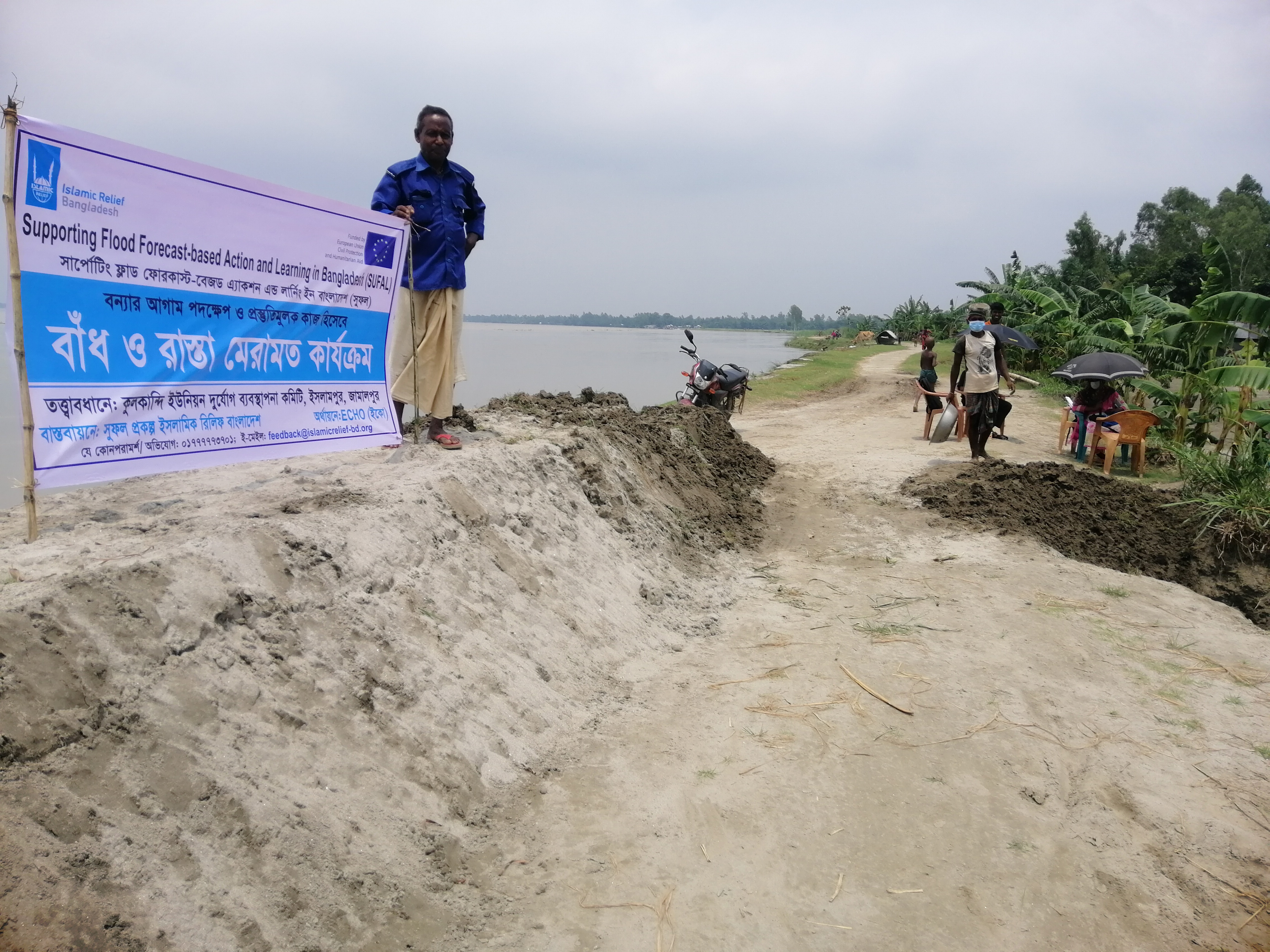
Level 1 early actions (left to right): Early warning and advisory dissemination, preparation of evacuation route, and embankment repair (source: SUFAL project)
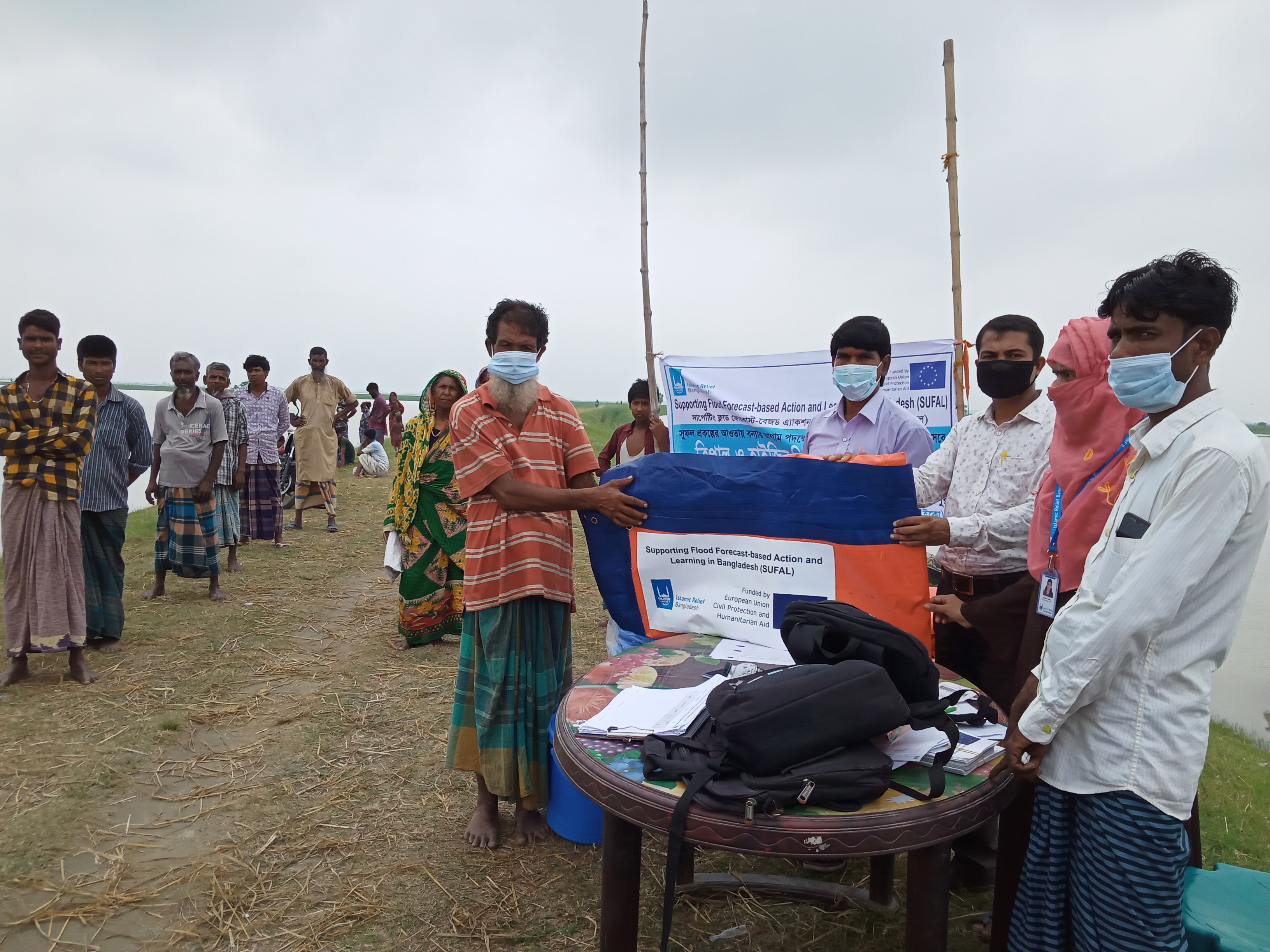
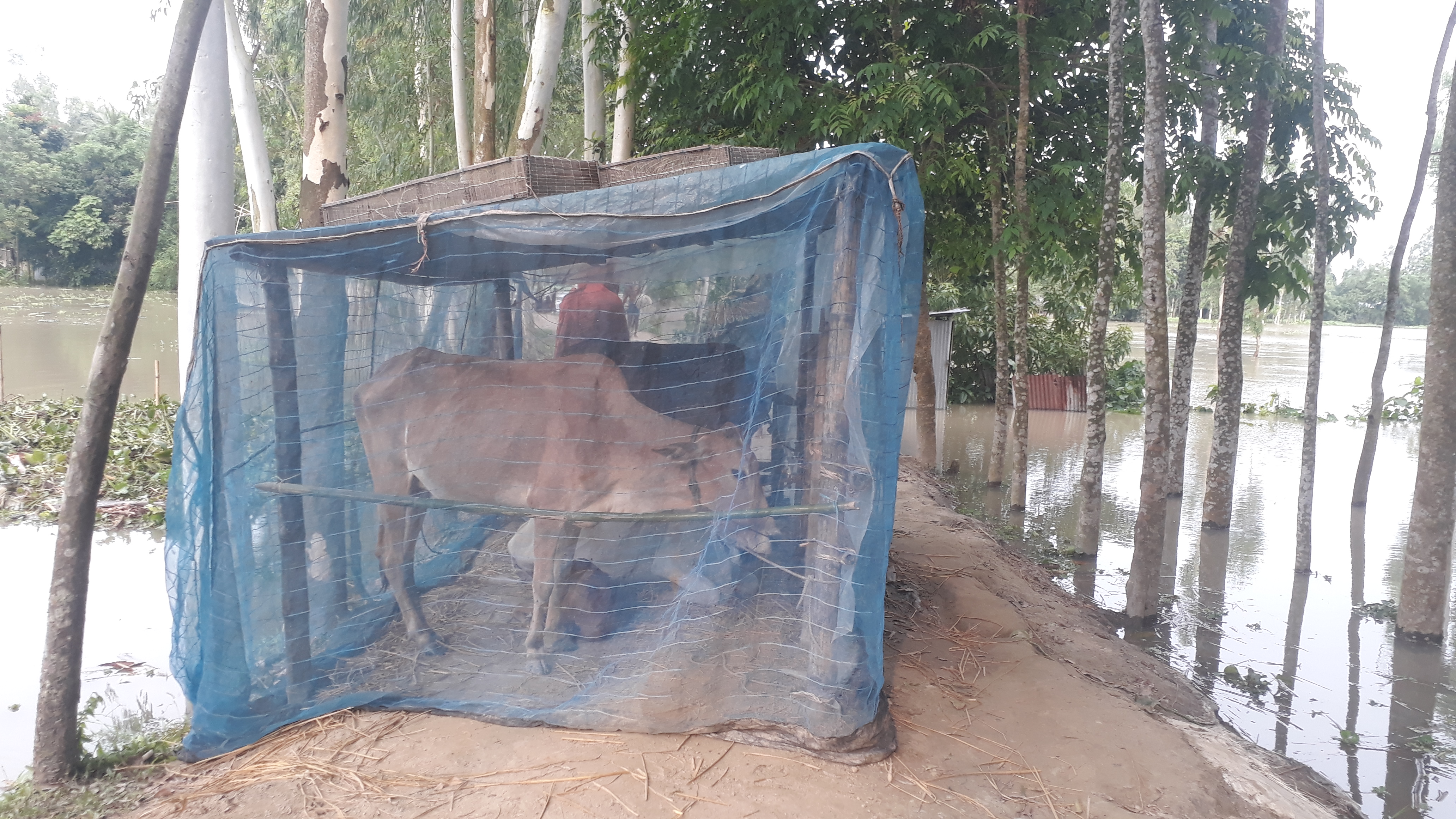
Level 2 early actions (left to right): Distribution of tents and WASH kits, temporary cattle shed made by villagers on an embankment, and boat transport to flood shelter (source: SUFAL project)
This flood season provides a learning laboratory for disaster management practitioners on forecast-based early action (FBA). Documentation of experiences, good practices, and lessons learned will prove useful in the advocacy to mainstream FBA. Integration of FBA in the latest Standing Orders on Disaster (SOD 2019) is a very inspiring and encouraging way forward for disaster risk reduction in this flood-prone country.